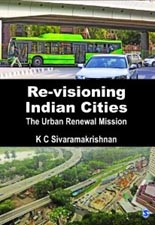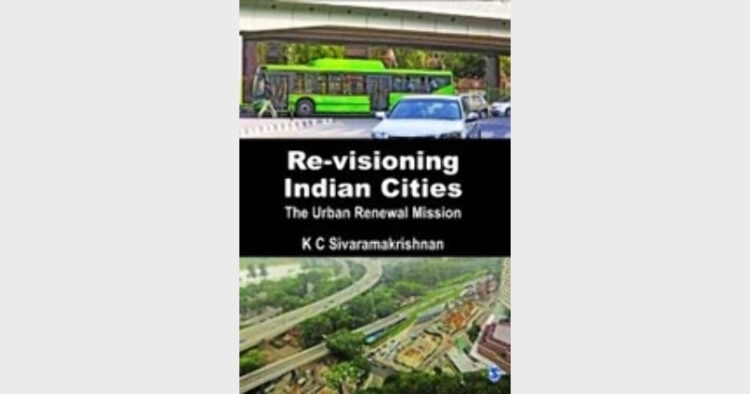City life : Ancient and modern?
By Manju Gupta?
Re-visioning Indian Cities: The Urban Renewal Mission, KC Sivaramakrishnan, Sage Publications, Pp 279, Rs 695.00?
 Mahatma Gandhi had once said, “India lives in the villages,” but today India lives in its towns and cities also. Plans have been formulated for urban growth and management but it has been found that the placing and availability of resources are often in an inverse relationship. When there is little money, planning is pursued, policy pronouncements are made and legal and other prescriptions are formulated. But when money is available, projects take priority and planning is forgotten. It was actually by the Third Plan that the importance of diagnostic surveys of urban conditions and preparation of master plans for cities was recognised and almost all the states had introduced town planning by the Fourth Plan. It was in December 2005 that the JNNURM (Jawaharlal Nehru National Urban Renewal Mission) programme was launched. It, encompassing 65 cities, has helped to raise awareness and concern about problems of urban growth and management and is believed to have contributed significantly to investments and improvements to the physical infrastructure of cities.
Mahatma Gandhi had once said, “India lives in the villages,” but today India lives in its towns and cities also. Plans have been formulated for urban growth and management but it has been found that the placing and availability of resources are often in an inverse relationship. When there is little money, planning is pursued, policy pronouncements are made and legal and other prescriptions are formulated. But when money is available, projects take priority and planning is forgotten. It was actually by the Third Plan that the importance of diagnostic surveys of urban conditions and preparation of master plans for cities was recognised and almost all the states had introduced town planning by the Fourth Plan. It was in December 2005 that the JNNURM (Jawaharlal Nehru National Urban Renewal Mission) programme was launched. It, encompassing 65 cities, has helped to raise awareness and concern about problems of urban growth and management and is believed to have contributed significantly to investments and improvements to the physical infrastructure of cities.
The book provides the policy background, describing the past efforts to comprehend and deal with growing urbanisation, policy pronouncements and programmes at frequent intervals and how the NURM took shape. It also raises the basic question of whether the NURM is a project or a policy response.
The book also analyses the various disconnects and deficiencies which have plagued the NURM since its inception. It also considers the processes and instrumentalities for measuring the progress of various projects devised as part of the NURM design.
Chapter 6 details the reforms agenda on which the NURM is declared to be contingent.
Two major items – one dealing with district planning and setting up of the District Planning Committees as required in the Constitution as well as the metro dimension and constitutional prescription for Metropolitan Planning Committees are described in data.
Additions to the reforms agenda and the recent initiatives taken by the government towards the stated purpose of building up the capacity of urban local bodies are discussed in Chapter 9.
The twelfth chapter gathers together the principal thoughts and concerns in this volume and indicates a possible way forward for the NURM.
This book discusses not only the rationale behind the choice of the cities covered by the Mission, but also the scope and coverage of the work undertaken and also the formidable problem of mega city governance and the difficulties of completing rural and urban development at the district level are reviewed.
(Sage Publications India Pvt Ltd, B1/I-1 Mohan Cooperative Industrial Area, Mathura Road, Post Bag 7, New Delhi – 110044; www.sagepublications.com)














Comments